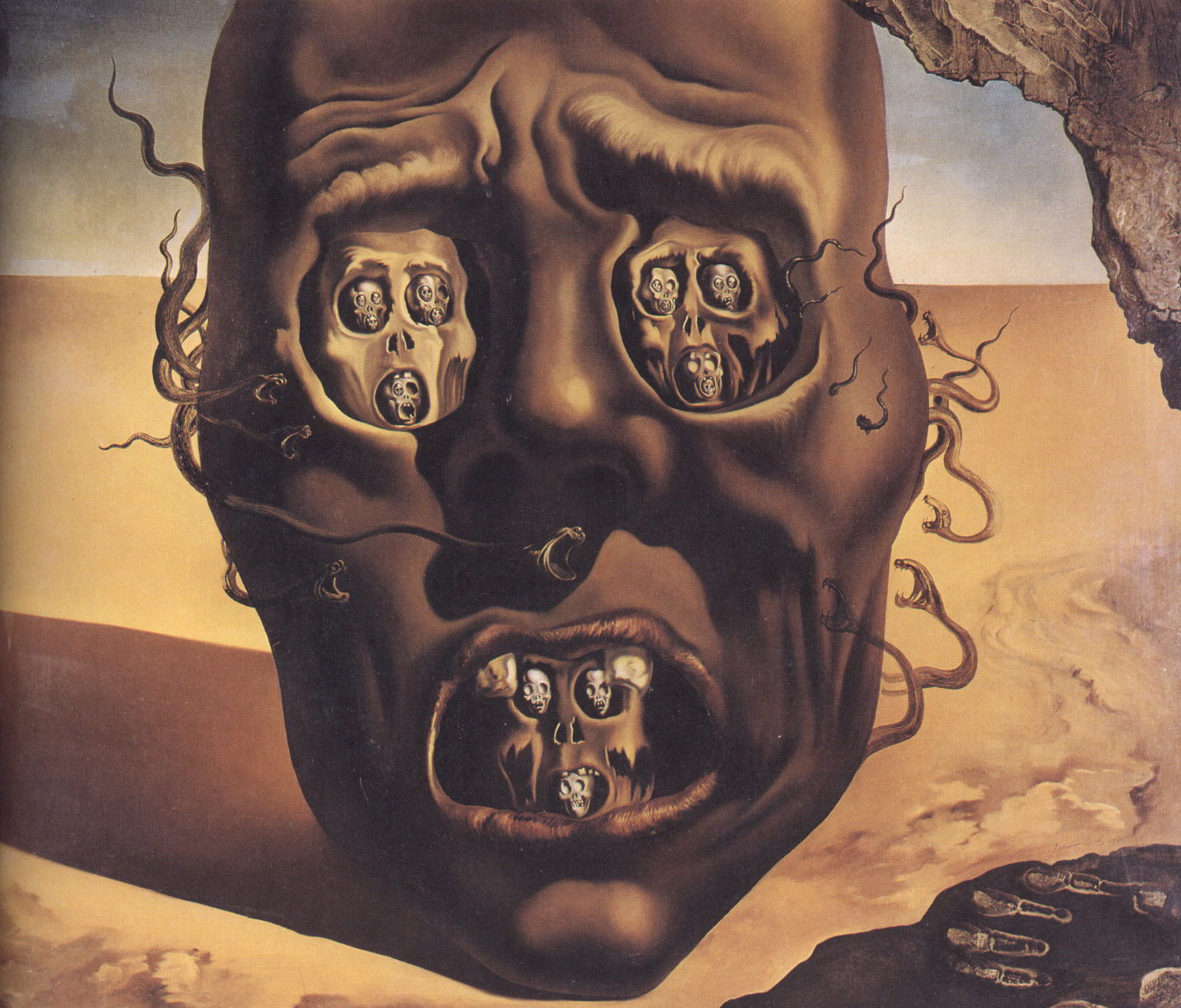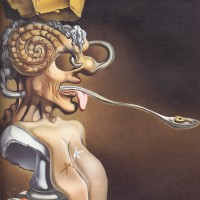| Painting Name | The Face of War |
| Painter Name | Salvador Dali |
| Completion Date | 1940 |
| Size | 100 cm × 79 cm (25.2 in × 31.1 in) |
| Technique | Oil |
| Material | Canvas |
| Current Location | Museum Boymans-van Beuningen Rotterdam |
The Face of War is Spanish artist Salvador Dali’s attempt to impersonate war itself. It is depicted terrifying, unlikable and to some extent, scary. It was made in 1940 right after the end of the Spanish Civil War and before the beginning of the second World War.
The Face of War Analysis
The setting is of a desert at the time of late evening when the sun is still lingering near the horizon.
The face is dismembered from its body and has withered to death. Though, there are expressions on it. Expressions which are left on a dead man’s face.
It’s shock and misery. The face is in the awe by the happenings of a war. On the both sides, it is covered with alive snakes attacking on each snakes on the other side.
Salvador Dali’s paintings couldn’t be complete without fictitious weirdness. Apparently, the face itself holds another faces in its eye-sockets and mouth, which holds other faces in their mouths and eyes sockets. This depiction seemingly continues to infinity and also the misery and the agony with each face.
On the lower right side of the painting is a print of a palm with fingers clearly seen. Dali asserted it to be his hand’s mark.
Around 2 * 2.5 feet large painting is currently rested in Museum Boymans-van Beuningen, Rotterdam.


 (6 votes, average: 3.50 out of 5)
(6 votes, average: 3.50 out of 5)


